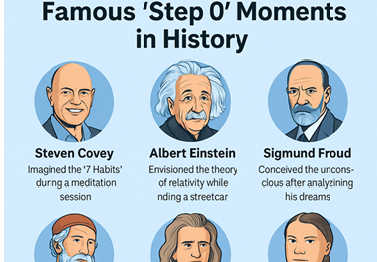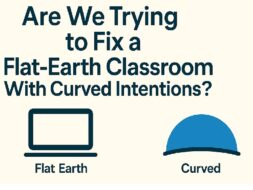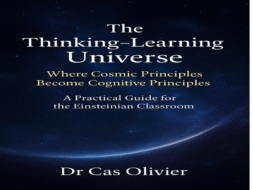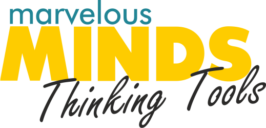For a deeper understanding, read this blog alongside: Pre-planning or Step 0 is a cognitive placeholder for thinking
Imagine a school system where students were taught not just how to solve, but how to pause, read more HERE
Step 0 doesn’t replace genius — it reveals the doorway to it.
The Invisible Minutes That Change Everything: The Power Of Micro-Step 0s
Great breakthroughs—whether in science, creativity, or understanding—don’t erupt from chaos. They begin with a barely perceptible moment: a felt intention, a north star you sense before you can fully name it. It’s not “know what comes next,” but “feel compelled toward something,” even though it hasn’t taken shape yet.
This subtle cognitive ignition is what the blog calls “the quiet pause behind the loudest breakthroughs.” It’s a universal mechanism—common to artists, thinkers, inventors—where a hazy endpoint emerges first, guiding the mind toward solutions that only become clear later.
In the thinking tools framework, this is Step 0—the moment of unmapped intention. It’s where creative paths are born, not in clear plans, but in quiet, unformed direction. And from that soft whisper of an endpoint, everything grows.
You don’t need to be Musk or Kahneman to do it.
Every teacher, parent, student, leader — every person — has Step 0 potential.
But naming it makes it teachable.
And making it teachable makes it transformational.
Here’s a list of super famous people across science, leadership, the arts, and innovation who each had defining Step 0 moments—those unseen mental pauses where ideas were framed before action.
These weren’t just insights; they were paradigm-shifting re-orientations that wouldn’t have occurred without Step 0:
Step 0 isn’t rare. It’s universal among breakthrough thinkers. But until now, it had no name. Let’s explore how it shaped some of the most influential ideas in recent times:
1. Isaac Newton – The Apple & Gravity
Step 0 Moment:
When the apple fell, Newton didn’t just say “Wow, apples fall.” He paused, framed the phenomenon against the moon’s orbit and earthly motion, and asked:
“Is there a universal force acting on both?”
Impact: Gave birth to classical mechanics.
2. Albert Einstein – Daydreaming About Riding a Light Beam
Step 0 Moment:
As a young patent clerk, Einstein imagined chasing a beam of light. That thought experiment wasn’t an answer—it was Step 0:
“What happens if I suspend my assumptions about space and time?”
Impact: Special Relativity and the collapse of Newtonian absolutes.
3. Archimedes – Eureka in the Bath
Step 0 Moment:
He didn’t start with calculation. He felt the water rise, paused, and connected sensation to volume displacement.
“What principle makes this happen?”
Impact: Principle of buoyancy.
4. Charles Darwin – The Galápagos Insight
Step 0 Moment:
Darwin spent decades sifting through patterns. Before formulating evolution by natural selection, he lived in Step 0:
“Why do similar species differ slightly from island to island?”
Impact: Theory of Evolution.
5. Leonardo da Vinci – From Anatomy to Flight
Step 0 Moment:
His notebooks reveal countless sketches of birds, humans, machines—none in execution, all in Step 0.
“How do motion, structure, and purpose unify?”
Impact: Multidisciplinary visionary thinking.
6. Marie Curie – Pausing Between the Data
Step 0 Moment:
Rather than just recording readings on uranium, she reflected on unseen forces and patterns.
“Is there something in matter itself producing this energy?”
Impact: Discovery of radioactivity.
7. Nelson Mandela – Rethinking Resistance
Step 0 Moment:
During his imprisonment, Mandela shifted from vengeance to reconciliation. That transformation wasn’t reactive—it was deep Step 0 work:
“How do we dismantle oppression without becoming oppressors?”
Impact: Peaceful transition to democracy in South Africa.
8. Steve Jobs – Design Before Tech
Step 0 Moment:
Jobs didn’t start with silicon or code. He started with the user’s feeling, asking:
“What would it feel like to hold the future in your hand?”
Impact: iPhone, iPad, intuitive design culture.
9. Beethoven – Composing Without Hearing
Step 0 Moment:
Even as he went deaf, Beethoven “heard” music in his mind. His pause before sound became profound Step 0 framing:
“What does music feel like from the inside out?”
Impact: 9th Symphony and a new era in musical expression.
Summary:
These legends weren’t just smart. They knew how to pause and reframe.
They didn’t rush to solve.
They reoriented their mental lenses—and then innovated.
That’s Step 0:
The place where revolutionary insight is born—not by thinking harder, but by thinking before.
10. Stephen Covey and the Omission of Step 0
Stephen Covey’s 7 Habits of Highly Effective People changed the way millions think about personal growth and leadership. His first habit, Be Proactive, rightly emphasizes ownership and intentionality.
But here’s the quiet truth:
Before Covey could articulate those 7 habits, he had a Step 0 moment — a pause, a shift in lens, a reorientation.
He didn’t start with habits. He started with a question: What are the root principles behind effectiveness? That’s Step 0 in action. Yet ironically, Step 0 never made it into the model. It was the invisible insight that made the model possible.
Step 0 is what shook his mental kaleidoscope — so that the 7 habits could fall into view.
11. Elon Musk – Redefining Cost from First Principles
Step 0 Moment:
Instead of asking, “What do rockets cost?”, Musk asked:
“What do the raw materials cost?”
This pause from assumption birthed first principles thinking, and with it, SpaceX.
Step 1: Build reusable rockets at radically lower costs.
12. Brené Brown – Rethinking Vulnerability
Step 0 Moment:
What if vulnerability isn’t weakness, but the cradle of courage?
That inner reframing made her TED Talk viral and reframed leadership worldwide.
Step 1: Research and teach shame and vulnerability with a new lens.
13. Rick Rubin – Stripping Down to Truth
Step 0 Moment:
Rubin helps artists pause. What’s left when the noise stops?
His sessions begin not with music, but with mental space — Step 0.
Step 1: Record from raw emotional clarity.
14. James Clear – Identity Over Habit
Step 0 Moment:
What if it’s who we think we are — not what we do — that shapes habits?
This insight reframed behavior change globally.
Step 1: Write Atomic Habits based on identity-driven habits.
15. Satya Nadella – From Know-It-All to Learn-It-All
Step 0 Moment:
Before fixing Microsoft, he asked:
“What kind of culture are we building?”
Step 0 allowed a reset of the company’s mindset.
Step 1: Foster collaboration, empathy, and continuous learning.
16 Daniel Kahneman – Rethinking Rationality
Step 0 Moment:
Instead of building better decisions, Kahneman asked:
“How are we wired to fail at decisions?”
This launched behavioural economics.
Step 1: Map biases and publish Thinking, Fast and Slow.
17 Susan Cain – Introversion as Strength
Step 0 Moment:
What if quiet isn’t weakness, but power?
She reframed workplace dynamics globally.
Step 1: Author Quiet and influence education and HR policies.
🧩 What’s the Lesson?
All of these people paused before they built.
They reframed before they acted.
They named the problem differently before solving it.
That’s Step 0.
It’s what makes deep innovation, lasting clarity, and truly human thinking possible. And yet — we rarely teach it.
What Happens When We Teach Step 0?
In schools, it helps learners:
- Frame the problem before solving it.
- Calm the brain before overload.
- See the terrain before charging in.
In leadership, it creates:
- Better meetings.
- Better planning.
- Better decision-making under pressure.
In life, it restores:
- Metacognition.
- Reflection.
- Intuition.
Step 0 doesn’t replace genius — it reveals the doorway to it.





